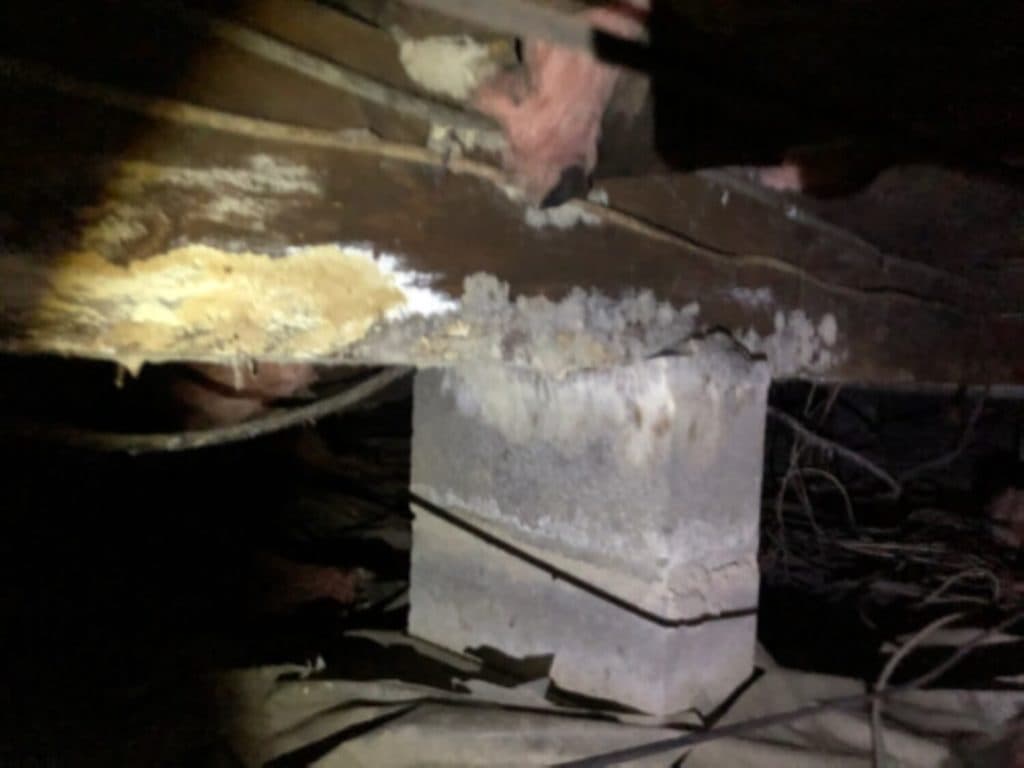
You may be wondering to yourself: Why does it matter, if my home’s crawl space is damp? It’s not like I live in that space. This is a reasonable question; most homeowners rarely ever go into the underside of their house. Even if you’re not claustrophobic, your average crawl space is cramped, often unlit, and frequently sheltering a few creepy guests of the insect variety.
But the health and well-being of your home begins at the foundation level. If your foundation is suffering from water intrusion, so is the rest of your house. Acculevel has been helping people with foundation issues since 1996, and we can promise you: excessive moisture will break down just about every element of your crawlspace. This includes your foundation, wood framing, HVAC, plumbing and electrical systems. In short, if you don’t fix a wet crawl space, you’re guaranteed trouble down the road.
We have highlighted the three most important reasons you should repair a wet crawl space in your home. Hopefully, these details can help you prevent more costly and damaging problems from developing.
Water can cause a foundation to decay; it presses against the foundation wall, filling up the hollow cores of the cinder block or seeping through the seams of poured concrete. Groundwater will also ooze in under the “floor” (most crawl spaces do not have a proper floor, only gravel or dirt).
If the ground is saturated under your home, puddles and standing water will collect. This gradually compromises the soil beneath the footings and allows the foundation to settle. If too much water collects in the ground around your home, it generates hydrostatic pressure. This pressure makes the soil expand and push against your foundation, which can cause it to crack, bow inward or give way. Any of these situations severely compromise the structural stability of your home.
If the moisture is allowed to pervade the space for an extended period of time, the structural wood framing system will weaken and begin to rot. This is especially likely if there is debris in your crawl space, like fiberglass insulation.
At one time, builders thought insulating the crawl space with fiberglass batting was a sound practice. But time has shown us that batting will hold water like an itchy pink dishrag, and keep the structure surrounding it moist and humid. This ever-present dampness accelerates rotting and provides an enticing location for insects and mold. Once this begins, the lumber will have to be replaced or reinforced, to prevent sagging floors, drywall cracks, and sticking doors/windows- all symptoms that should alert you to developing structural issues.
The "structural wood Framing system" includes the sill plate, floor joists, band joists, and beams. Need more information? You can learn more about your crawl space and its potential problems (with the solutions you need) in our Guide to Crawl Space Repairs for homeowners.
 Picture taken by an Acculevel project manager during a routine free estimate appointment.
Picture taken by an Acculevel project manager during a routine free estimate appointment.
Wet fiberglass insulation, mold, a rotting joist and bandboard are all clearly visible.
A wet foundation or wood structure guarantees that there is at least some biological growth; water intrusion goes hand-in-hand with mold. If not handled appropriately, mold can cause serious (even permanent!) damage to your health. This is especially true of anyone with allergies or asthma. Please keep in mind that whatever is in the air in your crawlspace is also in the air upstairs; HVAC systems can circulate and distribute the mold spores throughout your home.
Please be safe! Do not use bleach to clean wood or concrete surfaces. Bleach is only a safe and effective cleanser when properly used on non-porous surfaces; in small or enclosed spaces (like a crawl space), the fumes are a breathing hazard for those with allergies or asthma. The Environmental Protection Agency recommends that any mold problem larger than 10 square feet be examined by an expert.
Find an experienced local foundation company, and make an appointment. Before you sign a contract for any service, you should always verify the company is reputable, insured, and accredited by the Better Business Bureau.
If you live in Indiana or the surrounding states, contact Acculevel. Established in 1996, we specialize in foundation repairs and crawl space waterproofing. If you have noticed damp musty odors, sloping floors, or other signs of water damage in your crawl space, you can request a free estimate. An experienced project manager will evaluate your crawl space conditions and recommend the best course of action for you, to keep your home strong and healthy for years to come.
We have also created a free tool that any homeowner can use to see what could be causing problems in your home and how to fix it. Identify problems, explore solutions, and get advice on how and when to take action with our Symptom Checker.
[DISPLAY_ULTIMATE_SOCIAL_ICONS]